<em>Modern Drummer</em> Education Team Weighs In On: Learning Other Styles
We asked the members of the Modern Drummer Education Team if they felt that it’s important for all drummers to study Latin music and other musical genres, even if they don’t intend to ever perform those styles. Here’s what they had to say.
Jeff Salem
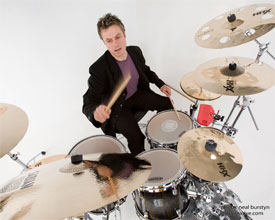 I remembered I was about four months into playing and studying the drums that my teacher said, “I’m going to start teaching you Latin rhythms.” I was a total rocker, but I had an open mind and wanted to see where this path would take me. I noticed all my friends who were drummers could play cool busy rock/funk patterns, and here I was working on bossa nova and cha-cha grooves. Being a little frustrated about that, I asked my teacher why we were going this route. He had many great answers:
I remembered I was about four months into playing and studying the drums that my teacher said, “I’m going to start teaching you Latin rhythms.” I was a total rocker, but I had an open mind and wanted to see where this path would take me. I noticed all my friends who were drummers could play cool busy rock/funk patterns, and here I was working on bossa nova and cha-cha grooves. Being a little frustrated about that, I asked my teacher why we were going this route. He had many great answers:
Your reading will greatly improve.
Your level of independence and coordination will increase.
You will develop much greater control of dynamics.
Your school music teacher will able to use you in any band situation.
Your song repertoire will grow.
If you pursue a career in music, you will be much more hirable.
Advertisement
Thirty years later, I can still see great advantages of studying different styles. First of all, my sense reading became sharper, whether it be reading a chart with broken figures, or comping to advanced patterns that required great independence. My level of independence and concentration grew incredibly fast as well. When I was in tenth grade, I was asked to play with all the different bands at school because of my versatility. This gave me confidence, and it felt cool to be the youngest guy in the band. My music teacher was very happy that I could play anything from a samba to a calypso.
Thanks to all of that practice developing a huge vocabulary of styles, I feel comfortable walking into any gigging situation. As a teacher, I try to inspire that same excitement in a student who’s strictly into one style of music or just wants to learn blazing licks. Sometimes during a lesson, in the beginning, I would start by playing a cool calypso, bembe, or merengue groove to see if I get a reaction. Those types of grooves are very musical and will usually get a smile from the student.
For double bass students who like to blaze grooves at 200 bpm, I will have them orchestrate a hand pattern of a Latin groove, like a mozambique or guaguanco, around the kit and single strokes underneath on the bass drums. If the groove is written in 8th or 16th notes I will apply the same note application with the feet. Advertisement
Another great way to get students turned on to Latin rhythms is to check out songs they like that have a Latin influence. On the song “Feeling This” by Blink 182, drummer Travis Barker plays the main groove with one hand between the hi-hat and snare while the other hand plays a syncopated bossa nova–type rimclick part on a cowbell. That song has been a great segue to get my students studying Brazilian music.
Mike Sorrentino
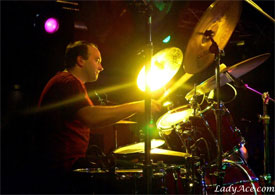 Very short and sweet: yes. I see no downside to being more versatile, regardless of the person’s desires. From a complete amateur to a total pro, the broader your rhythmic spectrum, the more you’ll be able to pull out of your toolbox. I’m a big believer in knowledge being a creativity enhancer rather than a restrictor. Plus, all styles are related somehow anyway. I know how to play a lot of styles, and I can’t even begin to count the number of times I’ve played a “style A” groove on a “style B” gig.
Very short and sweet: yes. I see no downside to being more versatile, regardless of the person’s desires. From a complete amateur to a total pro, the broader your rhythmic spectrum, the more you’ll be able to pull out of your toolbox. I’m a big believer in knowledge being a creativity enhancer rather than a restrictor. Plus, all styles are related somehow anyway. I know how to play a lot of styles, and I can’t even begin to count the number of times I’ve played a “style A” groove on a “style B” gig.
Donny Gruendler
 In my opinion, the most musical drummers are those who have studied multiple genres and brought those influences back to their preferred style (or band). In fact, the late/great Chuck Silverman made a career of teaching and analyzing traditional Latin rhythms and their subsequent placement within classic funk, R&B and pop. I’ve lost count of how many times he stopped me to point out that a particular modern artist had employed the clave and/or cascara within a tune.
Advertisement
In my opinion, the most musical drummers are those who have studied multiple genres and brought those influences back to their preferred style (or band). In fact, the late/great Chuck Silverman made a career of teaching and analyzing traditional Latin rhythms and their subsequent placement within classic funk, R&B and pop. I’ve lost count of how many times he stopped me to point out that a particular modern artist had employed the clave and/or cascara within a tune.
Advertisement
This cultural cross-pollination of genres is evident within the jazz idiom; many hand patterns employed in jazz are immediately useable in blues, pop, R&B, hip-hop, and electronica contexts. For example, many classic Stevie Wonder tunes (“Sir Duke,” “Superstition,” “I Wish,” etc.) utilize jazz ride variations on the hi-hat. In more modern settings, producers such as Madlib and Saint Germain frequently sample and program swing, jazz, blues, and big band rhythms and place them within electronica, house, and hip-hop tracks.
To sum up, by learning traditional rhythms and styles, you’ll immediately have “roots” and a deeper knowledge of what to play within today’s modern music. You’ll also be able to view each groove as a language within music, rather than just a series of patterns.
Jim Riley
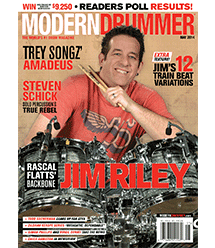 In a word: absolutely. No matter what style of music you prefer to perform, the four-way coordination required to play Afro-Cuban music will improve your ability to express yourself on the kit. You will also be amazed at how many Afro-Cuban rhythms can be applied to the genre you currently play. Over the past fifteen years with Rascal Flatts, I’ve played samba, songo, bossa nova, and even naningo. My knowledge of these styles, and my ability to play them, made our live performances better by adding excitement and variety to the show.
Advertisement
In a word: absolutely. No matter what style of music you prefer to perform, the four-way coordination required to play Afro-Cuban music will improve your ability to express yourself on the kit. You will also be amazed at how many Afro-Cuban rhythms can be applied to the genre you currently play. Over the past fifteen years with Rascal Flatts, I’ve played samba, songo, bossa nova, and even naningo. My knowledge of these styles, and my ability to play them, made our live performances better by adding excitement and variety to the show.
Advertisement
If you want to be a professional musician, you basically have no choice: you must learn all styles. The reason is simple. As a pro, you can’t afford to sit by the phone and hope that you get called to play that one genre of music that you love. You must be prepared to play any style that a perspective employer may throw at you. Whether it’s swing, hip-hop, metal, county, Latin, or world styles, you must be able to at least cover the basics or you won’t get called back.
Jason Gianni
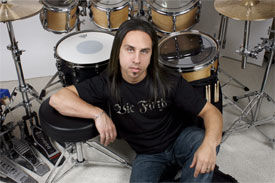 I can’t stress enough how important it is to learn other styles besides the one you intend to perform regularly. Since other styles require various forms of independence that you may not be used to, developing the skills to perform motions, exercises, grooves, and coordination that you wouldn’t normally use will greatly contribute to you evolving as a drummer. In addition, being exposed to different forms of music that you may not normally hear will inspire you to explore new compositional elements that will improve your overall musicianship.
I can’t stress enough how important it is to learn other styles besides the one you intend to perform regularly. Since other styles require various forms of independence that you may not be used to, developing the skills to perform motions, exercises, grooves, and coordination that you wouldn’t normally use will greatly contribute to you evolving as a drummer. In addition, being exposed to different forms of music that you may not normally hear will inspire you to explore new compositional elements that will improve your overall musicianship.
Perhaps the most vital reason to immerse yourself into various styles is to simply pay respect to the history of our instrument. When a rock drummer is studying with me, I’m always making reference to jazz in order to remind him/her of what allowed the style of rock to manifest into what it has become. Without a clear understanding of the steps music has taken to arrive where it is today, you’re limiting yourself. Music is a huge melting pot of information, and thousands of great drummers have contributed to that growth. It only makes sense that current players should be as versatile as possible to continue the progress of our instrument. Advertisement
Bill Bachman
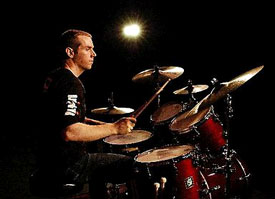 Learning different styles does miracles for developing your vocabulary. A lot of the Latin beats and independence I learned in my younger years fed right into the fill and grooves I use in a straight-8th rock/funk context. All of the jazz vocabulary I worked out plays right into a shuffle context too. If I had just worked on rock and funk stuff, I wouldn’t have anywhere near the vocabulary, comfort, and headroom that I do.
Learning different styles does miracles for developing your vocabulary. A lot of the Latin beats and independence I learned in my younger years fed right into the fill and grooves I use in a straight-8th rock/funk context. All of the jazz vocabulary I worked out plays right into a shuffle context too. If I had just worked on rock and funk stuff, I wouldn’t have anywhere near the vocabulary, comfort, and headroom that I do.
It’s also a good idea to learn all styles because you can then function in more musical settings and get more gigs. Now let me play the devil’s advocate: Sometimes if you try to become all things to everybody you can become nobody to anybody. I believe that by having a niche, you are more likely to get more of work because people identify you as a strong player in that niche. Ultimately, strive to be versatile while also playing to your strengths.
Jim Payne
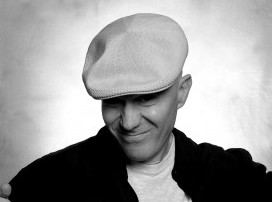 For me, this is a no-brainer: Of course you have to study other styles! Eventually you’re going to come up against them as a working musician. There’s a real cross-pollination in certain styles. If you just stick with one thing, that one thing is eventually going to morph into something else because of the influence of other styles. So you’d better get a wider perspective and start listening to other styles too. Plus, it’s fun!
Advertisement
For me, this is a no-brainer: Of course you have to study other styles! Eventually you’re going to come up against them as a working musician. There’s a real cross-pollination in certain styles. If you just stick with one thing, that one thing is eventually going to morph into something else because of the influence of other styles. So you’d better get a wider perspective and start listening to other styles too. Plus, it’s fun!
Advertisement
In funk and R&B, the Latin influence is huge. You have to study Latin music to really understand funk and R&B, even if you don’t intend to perform in a traditional salsa band. I’m sure our friend, the late Chuck Silverman, an expert in both styles who introduced me to several great players when I went to Cuba for research on my book with Tito Puente called Drumming With The Mambo King, would agree.
Rock ’n’ roll has incorporated rhythms from Latin music since it was invented, particularly the 3:2 clave used extensively in New Orleans street music. A prime example is the clave-inspried beat to “Bo Diddley” by Bo Diddley in 1955. In that same year, we had many R&B and pop tunes, including “When You Dance” by the Turbans, using a rhumba beat.
The rhumba pattern is an 8th note followed by two 16ths and six more 8ths, orchestrated on the drumset between the closed hi-hat and snare, with the possible addition of 8th notes on beat 4 played on the small tom to imitate the congas. Ray Charles used an uptempo rhumba beat on the famous “What I’d Say” in 1958 and a slower rhumba/bolero beat in “One Mint Julep” in 1961. Dr. John’s “Iko Iko” from 1972 is another straight 3:2 clave. James Brown’s “’Super Bad,” from 1971, was based on the three side of the clave, as was War’s “Slippin’ Into Darkness,” which was also released in 1971. Advertisement
Then we get to Herbie Hancock’s “Chameleon,” from 1973, which features the 3:2 clave orchestrated between the bass drum and the snare. This became the basis for many future grooves. Again, it was Latin all the way.
Once you get started with Latin music, you’ll find that these rhythms are super-funky, especially cascara patterns, which are normally played on the side of the timbales but can be transferred to the closed hi-hat in a drumset context.
Latin cowbell patterns can also be transferred to the closed hi-hat or the ride cymbal. Check the syncopated grooves of David Garibaldi with Tower of Power for Latin cascara elements combined with other Latin concepts, like leaving out “1” on the bass drum. Advertisement
There’s also a lot of cross-pollination, especially in Europe, between funk and African music, especially in those great triplet rhythms that combine 4/4 and 6/8. Check out “Pymfao” by Chic Hot, from the CD Satyagraha, or “Piste 1” by Meddy Gerville Group from Sobat’ ek Lamour.
Marc Dicciani
 I believe it is very important for drummers, regardless of their primary stylistic playing interest, age, experience, or ability, to learn many styles of music and drumming. I had the great fortune that my first drum teacher loved Afro-Cuban music and played timbales, congas, and bongos. After about six months of drum study, he put on an LP, and we listened to a couple tracks. Although I thought the music was interesting, I didn’t have a point of reference; I wanted to play rock and jazz. I remember thinking that I didn’t really understand this different music or why we were listening to it. He showed me a couple basic timbale patterns, and I began studying the instruments and the music. After a few weeks I was hooked!
I believe it is very important for drummers, regardless of their primary stylistic playing interest, age, experience, or ability, to learn many styles of music and drumming. I had the great fortune that my first drum teacher loved Afro-Cuban music and played timbales, congas, and bongos. After about six months of drum study, he put on an LP, and we listened to a couple tracks. Although I thought the music was interesting, I didn’t have a point of reference; I wanted to play rock and jazz. I remember thinking that I didn’t really understand this different music or why we were listening to it. He showed me a couple basic timbale patterns, and I began studying the instruments and the music. After a few weeks I was hooked!
In many countries, especially those in Africa, South America, and throughout the Caribbean, drumming is an important part of the culture and the day-to-day lives of the people. Drumming, music, and dance are an integral part of their religious and social rituals, history, and entertainment. In these societies, drums are considered almost sacred, and professionals and everyday people alike perform the music. In these cultures, almost everyone is a drummer. Advertisement
The benefits of studying Latin and other musical genres are tremendous and could easily fill a book with explanations and examples. I’ll just list a few of the benefits that my students and I realized. Studying and learning to play Latin and other musical genres: develops respect and understanding of other people, cultures, and music, especially those that are very different from our own; it helps to develop a drummer’s own unique musical voice; it informs and influences your other styles of playing (technically and musically); it expands musical vocabulary and ways doing things; it increases awareness of how rhythms and sounds are organized drumming in music throughout the world; it broadens technique and musicality through learning alternate uses of sounds and limbs; and it provides a framework for students of the instrument to continue on a lifelong thirst for knowledge and improvement. A few examples of drummers who have been heavily influenced by the study of Latin and world music include: Sonny Emory (left-foot clave while soloing), Dave Weckl (incorporating songo and Cuban influences into funk and jazz playing), Steve Smith (using the music, instruments, and rhythms of India), Steve Gadd (famous drumset interpretation of a Mozambique rhythm), and countless other rock, jazz, metal, and pop drummers, including Rod Morgenstein, Shelia E, Tommy Igoe, Adam Nussbaum, and of course the late Chuck Silverman, whose lifetime of contributions to the study of Latin music and rhythm helped to make them understood and accessible to drummers throughout the world.
I tell my students to start learning other genres by picking a “gateway” style—one that interests them and that they feel is just outside of their comfort zone but not so far outside that it’s intimidating. ‘Gateway styles that I usually recommend include samba and cha-cha, and I often suggest checking out instructional books and videos by Chuck Silverman.
Learning to play any musical style is not just about learning beats and patterns; it’s about studying, understanding, and respecting the people, culture, music, and traditions.
Jayson Brinkworth
 Absolutely, as clave is deeply rooted in so many different styles that today’s drummers play. In terms of Latin music, I believe it is a great study for students to really understand the function of the drumset in those styles. In my own teaching, I like students to have a very open mind in terms of what music we play. We can learn something from all styles—the programming of hip-hop beats, the energy and speed in metal, the beauty of big band arrangements, and so much more. Also, by keeping an open mind and taking ideas from many different styles of music, we allow ourselves to have a well-rounded drumming toolbox. A few great examples of this are Steve Gadd’s Afro-Cuban influence on Paul Simon’s “Late in the Evening,” Stewart Copeland’s reggae influences on Police tracks, Stanton Moore’s infusion of Latin, second-line, and Brazilian rhythms in funk, and so much more. This list can go on for days, but these players are great because they listened and took ideas from many different styles and made them their own. I am a believer in the more we know, the more valuable we are. I also never want any of my students to get stumped on a gig if someone makes a musical reference to what they should play, and they don’t understand it.
Advertisement
Absolutely, as clave is deeply rooted in so many different styles that today’s drummers play. In terms of Latin music, I believe it is a great study for students to really understand the function of the drumset in those styles. In my own teaching, I like students to have a very open mind in terms of what music we play. We can learn something from all styles—the programming of hip-hop beats, the energy and speed in metal, the beauty of big band arrangements, and so much more. Also, by keeping an open mind and taking ideas from many different styles of music, we allow ourselves to have a well-rounded drumming toolbox. A few great examples of this are Steve Gadd’s Afro-Cuban influence on Paul Simon’s “Late in the Evening,” Stewart Copeland’s reggae influences on Police tracks, Stanton Moore’s infusion of Latin, second-line, and Brazilian rhythms in funk, and so much more. This list can go on for days, but these players are great because they listened and took ideas from many different styles and made them their own. I am a believer in the more we know, the more valuable we are. I also never want any of my students to get stumped on a gig if someone makes a musical reference to what they should play, and they don’t understand it.
Advertisement
David Stanoch
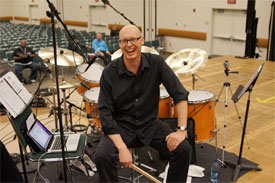 I believe it is a worthwhile study, simply based on my own experience. If you play the drumset and have yet to explore the world of so-called “Latin” drumming—which an umbrella term that includes the rhythms of Brazil, Cuba, the Caribbean, and much more—all I can say is you have the journey of a lifetime ahead of you! The inspiration you will draw from learning about these rhythms will deepen and inform your drumming vocabulary, and what you will learn about culture and traditions from these regions will make you a more informed citizen, which has benefits applicable to all areas of your life.
I believe it is a worthwhile study, simply based on my own experience. If you play the drumset and have yet to explore the world of so-called “Latin” drumming—which an umbrella term that includes the rhythms of Brazil, Cuba, the Caribbean, and much more—all I can say is you have the journey of a lifetime ahead of you! The inspiration you will draw from learning about these rhythms will deepen and inform your drumming vocabulary, and what you will learn about culture and traditions from these regions will make you a more informed citizen, which has benefits applicable to all areas of your life.
You may have heard the popular songs “Bo Diddley” by Bo Diddley, “Fat Man in the Bathtub” by Little Feat, “Fly Like an Eagle” by the Steve Miller Band, “Chameleon” by Herbie Hancock, “Riders on the Storm” by the Doors, and jazz instrumentals like Lee Morgan’s “The Sidewinder” or Kenny Dorham’s “Una Mas,” and been curious about the drum beats but were unaware that the first four tunes are based on the Afro-Cuban son clave and the second three have beats based on the Brazilian bossa nova. In each case, the drummer adapted those rhythms to match the style of music they were playing. While none of the drummers on those recordings are from Latin America, their decisions were informed by their awareness of Latin music.
This awareness is an important tool for any musician—but particularly the drummer—when it comes to knowing how to establish the best feel for the music. It’s always important to listen to a lot of music. Listening to groups or drummers who are trailblazers in your preferred genre is important, but even Led Zeppelin’s John Bonham spent a lot of time listening to jazz and R&B, which helped create the Led Zeppelin sound. Advertisement
Jazz, blues, and rock ’n’ roll have roots in the rhythms of Latin cultures, but to an untrained ear it’s a secret until you make the connection. Then you hear the references everywhere, like in the classic Bo Diddley beat, or in one of Jeff Porcaro’s favorite fills that’s based on an Afro-Cuban 6/8 rhythm, or in the basic foundation of the music of Carlos Santana.
In my own development as a drummer, I checked out many of the beats from the songs I listed previously. I also heard variations of the Cuban mambo played by Art Blakey and Elvin Jones, as well drummers like Billy Higgins and Dannie Richmond playing a Brazilian bossa nova, and later Steve Gadd’s take on the mozambique and Dave Weckl’s songo variations. These examples were applied in a jazz or fusion context. I assimilated them into my own playing but with no understanding of the culture and tradition behind them. This was not an issue for me—or even something I recognized the importance of—until later on.
My college days found me delving heavily into reggae and ska drumming, as this was the era of Bob Marley’s peak, and the British punk/reggae influence was also huge. I learned much about the culture and rhythmic vocabulary, which I found to be very useful and interesting. This set the stage for my future in-depth focus on Brazilian, Cuban, and West African music and culture. Advertisement
In my post-college days, I had a gig with a seven-piece horn band where a sax player from East Los Angeles joined and showed up with a book of charts by Tito Puente, Eddie Palmieri, Horace Silver, and Chick Corea, that we started performing live onstage with no rehearsal. That was when I learned I did not have the proper tools to make much of this music work. To say it was embarrassing is an understatement, but I took quick action and listened carefully to the original recordings of the songs. I also turned to my friend, Steve Miller Band drummer Gordy Knudston, who had previously played in a group with the great Eric Gravatt of Weather Report. Eric has a deep and intrinsic knowledge of African, Brazilian, and Cuban music, which Gordy had studied as well. Gordy gave me great direction for advancing, and also I gathered educational studies from various resources by Chico Guerrero, Airto, Alex Acuna, and Chuck Silverman. I set about getting my act together, and I had the good fortune of having to play this incredible music nightly. When I left the gig, I earned the praise of the sax player who’d initially been unimpressed with my playing, and that great encouragement and motivation to dig even deeper.
Since then, I’ve spent more time around Gravatt, and I’ve learned from some of the other greats of the various genres, including Ignacio Berroa, Walfredo Reyes Sr.
If you choose to follow this path, I’d like to share two more points. First, be aware of how you present this acquired knowledge of other styles on the bandstand. I went from being someone who understood no distinction between these rhythms and their cultures to becoming one who has a solid working knowledge of them that I can apply musically. The second point comes from Chuck Silverman, who, when asked this same topic question by Modern Drummer at PASIC 2013, gave a most eloquent answer that included this: “One reason why [to study Latin music] the more or less extreme independence you develop from learning these rhythms. Learning to do different patterns with your feet, different patterns with your hands, enhances your coordinated independence of the drumset, and that’s what you want. You want to be in command of this instrument.” I find this to be quite true and also very inspiring.
For more great examples of Latin rhythms applied to current contemporary rock and pop music tracks, be sure to revisit Chuck Silverman’s Modern Drummer articles, “Latin Rhythms in Pop Music, Part 1: Bossa Nova and Samba” (March ’13) and “Latin Rhythms in Pop Music, Part 2: Afro-Cuban” (Feb. ’14). Advertisement
Joe Bergamini
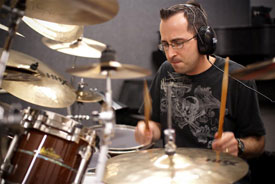 The study of different styles of music is one of the major aspects of my career and my teaching philosophy. One cannot know what influence and impact the study of a new style of musical has until one devotes some time and attention to listening to that music and studying its drumming. I can say firsthand that my studies of Latin drumming were of major impact to my playing well before I had the chance to play Latin music (on Andres Forero’s book) at In the Heights on Broadway and with musicians on various other sessions. If you go back and listen to any of my work with 4Front, Happy the Man, or even my earlier band Eternal Vision, you can hear various Latin ideas being put to use. As a matter fact, the cross-pollination of Latin rhythms with rock is one of my favorite methods of groove construction and creativity. This philosophy also expands to the study of jazz (from which all drumming has grown), blues, R&B, and every other major modern style. As a teacher, I find it to be of prime importance to expose my students to at least the basics of all of the styles. Then they can take that ball and run with it and expand their horizons in whichever direction they choose. But a basic familiarity with all the styles is absolutely necessary, in my opinion. If you plan on being a professional drummer, whether for shows, studio, or tours, this knowledge is not negotiable. It’s a professional skill that all working pro drummers should possess.
The study of different styles of music is one of the major aspects of my career and my teaching philosophy. One cannot know what influence and impact the study of a new style of musical has until one devotes some time and attention to listening to that music and studying its drumming. I can say firsthand that my studies of Latin drumming were of major impact to my playing well before I had the chance to play Latin music (on Andres Forero’s book) at In the Heights on Broadway and with musicians on various other sessions. If you go back and listen to any of my work with 4Front, Happy the Man, or even my earlier band Eternal Vision, you can hear various Latin ideas being put to use. As a matter fact, the cross-pollination of Latin rhythms with rock is one of my favorite methods of groove construction and creativity. This philosophy also expands to the study of jazz (from which all drumming has grown), blues, R&B, and every other major modern style. As a teacher, I find it to be of prime importance to expose my students to at least the basics of all of the styles. Then they can take that ball and run with it and expand their horizons in whichever direction they choose. But a basic familiarity with all the styles is absolutely necessary, in my opinion. If you plan on being a professional drummer, whether for shows, studio, or tours, this knowledge is not negotiable. It’s a professional skill that all working pro drummers should possess.
TO VIEW PREVIOUS EDUCATION TEAM QUESTIONS CLICK HERE.



